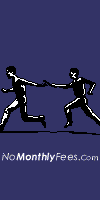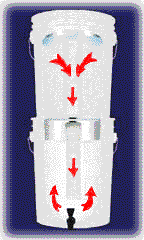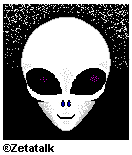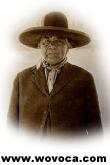 |
|||||||||
Press CTRL+D to bookmark this page! |
|||||||||
 |
|||||||||
| Click here for
EarthMotherCrying Wallpaper |
|||||||||
The Aum Shinrikyo - "The Cult at the End of the World" |
|||||||||
|
|||||||||
|
|||||||||
|
|
|||||||||
|
|||||||||
|
|||||||||
by Marty Butz Founder: Shoko Asahara (formerly Chizuo Matsumoto) Founding Date: 1987 Official Publications: The Truth of Humanity’s Destruction, The Secret Prophecy of Nostradamus, Declaring Myself the Christ (parts 1 & 2). Organizational Structure: Shoko Asahara has wielded absolute authority as the movement’s "Supreme Leader." Over the years, members have occupied any one of seven ranks indicating varying stages of spiritual enlightenment. For practical purposes, Aum was structured to mirror the framework of the Japanese government with 24 distinct organizations set up to carry out specific functions. Aum Shinrikyo was founded by Shoko Asahara, formerly Chizuo Matsumoto, who was born partially blind into a poor family in 1955. Even early on, Asahara aspired to be a leader, running for president in elementary, junior high and senior high school. However, he was continually rejected by his classmates who feared him and his threats (David E. Kaplan & Andrew Marshall. The Cult at the End of the World: The Terrifying Story of the Aum Doomsday Cult, from the Subways of Tokyo to the Nuclear Arsenals of Russia, 1996, p. 8). Soon after Asahara married in 1978, and after already failing his entry exams for Tokyo University, he embarked on a business venture peddling quack remedies. Eventually, the police caught up with him and he was found guilty of a criminal felony. After his fraudulent activities were exposed in a local paper, his business went broke (D. W. Brackett, Holy Terror: Armageddon in Tokyo, 1996, p. 64). After some spiritual searching and disappointment, Asahara started his own religious organization, incorporating Aum Shinsen–no kai in 1984, later to be named Aum Shinrikyo meaning "teaching the universal or supreme truth" (U.S. Senate Subcommittee on Investigations (Minority Staff), Staff Statement, Global Proliferation of Weapons of Mass Destruction: A Case Study of the Aum Shinri Kyo, Washington, D.C. October 31, 1995, p. 9). Previously, Asahara was a devout member of Agonshu, a new Japanese religion from which Aum was to inherit many elements (Shimazono Susumu, "In the Wake of Aum: The Formation and Transformation of a Universe of Belief," Japanese Journal of Religious Studies, 1995 22/3–4, p. 387). In 1985, perhaps still ambitious for leadership, Asahara realized his own divine appointment and religious calling. While conducting religious exercises, Asahara claims he experienced a divine visitation from the Hindu god Shiva. Asahara also began to claim special powers, such as the ability to levitate. This claim was reported in an occult journal and provided Asahara with a significant degree of free publicity (Ibid., p. 388). Very quickly, Aum collected a very large following through various means, including, but not limited to, leafleting and street corner proselytizing. Aum’s classes on yoga, herbal healing and meditation also played a part. Additionally, Aum owned a number of computer stores, book stores and noodle shops through which it was able to gain recruits (Senate Report, p. 22). Beyond these means, a number of experts testified that Aum used "psychedelic and mind-altering drugs in the recruitment process." Reportedly, these elements were used in conjunction with "brainwashing techniques including sleep deprivation and isolation therapy" to obtain or retain followers (Ibid.). As Aum grew in membership, complaints also grew in number. Parents and family members of Aum converts alleged that the organization was guilty of kidnappings and physical violence. The result was the birth of a number of concerned parent groups in response to Aum’s assaults. "Those who formed these groups complained that they themselves became victims of assaults and harassment" (Ibid., p. 10–11). 1989 marked the first major turning point for Aum when it obtained "official religious corporation status." This status came as a result of Aum’s vigorous lobbying campaign and "scandalous" efforts to pressure the certifying agency and local politicians (Ibid., p. 9). Apparently, after demonstrations, protest letters, a lawsuit and having its officials "hounded," government officials "caved in and registered the cult" (The Cult at the End of the World, p. 24). Aum’s recognition as an official religion was important for a variety of reasons. In addition to providing Aum with "massive tax breaks," it also provided Aum with "de facto immunity from official oversight and prosecution." By law, Aum’s new found religious recognition would tend to inhibit any investigation with regard to its doctrine or practices, including seemingly "for profit" activities. Even criminal activities would now be "difficult, if not impossible" to investigate because of the "government’s reluctance to investigate religions" (Senate Report, p. 9). Within months of Aum’s receiving official religious status, "the cult felt so confident that they were immune from government interference that they decided to silence Sakamoto," a distinguished lawyer who "had represented many of these anti-Aum groups." After murdering Sakamoto, his wife and his one year old son, "the lack of any government response…apparently emboldened the Cult to commit even more horrible and blatant attacks upon their perceived enemies in Japan" (Ibid., p. 11). Thus, Aum’s obtaining official religious status was a major turning point in the development of Aum’s character. The second major turning point in Aum’s development occurred in 1990. Asahara revisited his once youthful dream of becoming Prime Minister of Japan, and so he campaigned, along with other followers, to be elected to the Japanese parliament. However, despite Asahara’s predictions, "The election proved a disaster.… All twenty-five Aum candidates went down to miserable defeats, including Asahara" (The Cult at the End of the World, p. 47). The political failure affected the developing character of the organization. As Aum’s election fortunes turned sour, Asahara’s views towards the future turned increasingly more pessimistic. His "preaching dwelled more and more on the disasters awaiting humanity." He "had taken the defeats personally and swore revenge on those who dared to stand in Aum’s way" (Ibid., pp. 48, 49). "From then on the rhetoric of Armageddon and paranoia became incessant" (Senate Report, p. 12) and he predicted that war would break out "between Japan and the United States…sometime in 1997" (Ibid., p. 13). Armageddon proved to be much more than just talk for Asahara as he and members of his inner circle planned and amassed weapons of mass destruction, while actually carrying out numerous violent and illegal acts, including murder. However, it was Aum’s sarin gas attack in the Tokyo subway system which ultimately drew decisive attention to its dangerous activities and true nature. While the attack killed 12 and injured 5,000, it had the potential to kill tens of thousands. In response, Japanese police made massive raids and arrests of Aum members. By 1996, "of the one hundred seventy Aum members arrested by police, more than one hundred have been brought to trial. All were found guilty and received either prison terms or suspended sentences" (Holy Terror, p. 183). Startling revelations have come to the surface in the aftermath of the Tokyo gassing. Among these, it was learned that Aum: had accumulated over $1 billion in assets, had successfully "forged relations with Japan’s ruthless crime syndicate" and the Soviet KGB, had "infiltrated various levels of the Japanese government and industry including law enforcement and military," had regularly used murder and kidnapping to silence its enemies, and was in the process of developing the biological weapons of anthrax, botulism and ‘Q’ fever (Senate Report, pp. 2, 5; The Cult at the End of the World, p. 3). Shoko Asahara’s trial still continues. In the larger context, Aum’s doctrine was influenced by many themes, some deeply rooted in Japan’s religious history. These themes include, "(1) a taste for religious syncretism; (2) a concern with miracles…; (3) a stress on recruitment, donations, and growth; (4) a fascination with esoteric Buddhism and its attendant beliefs (such as in ‘holy men,’ living Buddhas capable of the direct physical transfer of power); (5) a taste for Buddhist doctrines and meditation practices that see reality as an illusion and approve of a calm and serene detachment; (6). an interest in occultism and psychological techniques as means to effect physical and spiritual transformation (an interest widespread in mass culture since the 1970s)" (In the Wake of Aum, pp. 410–11). Early on, Asahara was also influenced by his association with the religious system of Agonshu. Asahara "inherited many elements… including deep concern with freedom from Karma through magical ritual practices; with the transformation of mind and body and the development of psychic powers through science; with meditation focusing on the awakening of kundalini through the union of yoga and esoteric Buddhism; and with the development of a teaching and training system based on early Buddhism" (Ibid., p. 387). However, in contrast to Agonshu, Aum strongly emphasized teachings related to emancipation ("transcending life and death"— gedatsu) and enlightenment ("absolute freedom, absolute happiness"— satori) (Ibid.). Emancipation or gedatsu was vaguely defined, though Aum was very much devoted to bringing quick deliverance from bad karma. Aum implemented training for its members and eventually delineated various stages towards reaching this ultimate stage of emancipation. Worldly denial was one means towards obtaining emancipation. However, over the course of time, the concept of emancipation for members was closely tied to a strong dependence of Aum members upon Shoko Asahara and being committed to Aum Shinrikyo. Aum members could move along in their spiritual development through various ways and magical rites. For example, a ceramic mystical trinket known as the perusha was worn as a badge and said to contain the energy of the Master (Ibid., p. 394). In the shaktipat rite, requiring a significant donation, spiritual development could be accelerated through the mystical touch on the forehead by one who had already attained gedatsu (Ibid., pp. 394–5). In time, "students were told that cash donations to Aum would help their ‘spiritual development’" (The Cult at the End of the World, p. 15). Some rites were very expensive and the total variety eventually numbered twenty. Aum’s spiritual rites came to include such things as drinking Asahara’s blood, drinking his used bath water, and drinking brewed hair locks or beard clippings (Ibid., p. 18). Asahara claimed for himself a messianic mantle. In 1985, Asahara allegedly had a visitation from the Hindu god Shiva about his identity and calling. Asahara then understood himself to be "‘the god of light who leads the armies of the gods’ and is to create an ideal society made up of those who have attained psychic powers, a society called the kingdom of Shambhala" (In the Wake of Aum, p. 388). In keeping with Asahara’s grandiose claims, he supposedly possessed supernatural powers, including the ability to levitate and to remain suspended in water. After a spiritual pilgrimage to the Himalayas, Asahara wrote that he was now "‘free to leave my physical body, any time, anywhere…’" (The Cult at the End of the World, p. 14). Supernatural abilities were not reserved for himself, but were available to all who would become enlightened through him. Advertisement for Asahara’s first book, Secrets of Developing Your Powers, claimed, "‘Spiritual training that doesn’t lead to supernatural powers is hogwash! … The Venerable Master will show you the secrets of his amazing mystic powers. See the future, read people’s minds, make your wishes come true, X-ray vision, levitation, trips to the fourth dimension, hear the voice of God and more.…’" (The Cult at the End of the World, p. 14). Though personal emancipation or salvation was emphasized, Asahara also conceived of establishing a utopian society. However, such a society would not be possible until a final war or Armageddon was to take place. In Aum’s early development, Aum perceived itself to be in a position to help save people outside the membership of Aum survive this final war. Later in Aum’s development, it was perceived that "society in general was under the rule of the devil, and that Aum was thus under attack by agents of evil" (In the Wake of Aum, p. 399). Foremost instruments of evil in the world were the United States and the Jewish people, whom Aum perceived as the "hidden enemy" (Senate Report, p. 19) Ultimately, salvation would be "only coming at the end of Armageddon to those who adopted the Aum faith" (Ibid., p. 13). Asahara dwelt on the subject of the apocalypse in a number of books which he authored. These included The Truth of Humanity’s Destruction, The Secret Prophecy of Nostradamus, Declaring Myself the Christ, and Declaring Myself the Christ, Part II (Holy Terror, p. 95). However, even years earlier, Asahara had made specific predictions regarding events leading up to the Apocalypse, including the demise of the Japanese economy in 1990 which would "lead to a virtual police state" and that "the year 1996 will witness ‘the sinking of Japan’…" (The Cult at the End of the World, p. 17). The biblical teaching concerning life after death is contrary to all eastern religions, including Aum, which teach reincarnation. Hebrews 9:27 teaches that "…it is appointed unto men once to die, but after this the judgment." Shoko Asahara assumed the status of a prophet when he made predictions concerning the future— e.g., saying that Japan would turn into a "virtual police state" in 1990, that Japan would entirely sink into the ocean in 1996, and that war would break out between the United States and Japan in 1997. Biblically, Shoko Asahara is judged to be a false prophet since he has made prophecies which have failed. (See Deuteronomy 18:20–22) Shoko Asahara claimed for himself the mantle of "Christ." However, the Bible teaches that there is only one Christ, Jesus Christ, and all others claiming to be Christ are in fact anti-Christs (see Acts 4:12, Acts 1:12, Matthew 24:4–5, 23–27, 1 John 2:18). |
|||||||||
|
|||||||||
|
|||||||||
|
|||||||||
Shapeshift to WOVOCA! to view this site's main page |
|||||||||
|
|||||||||
|
|||||||||
|
|||||||||
|
|||||||||
|
|||||||||







![[Image]](pict41.jpg)
![[Image]](pict43.jpg)